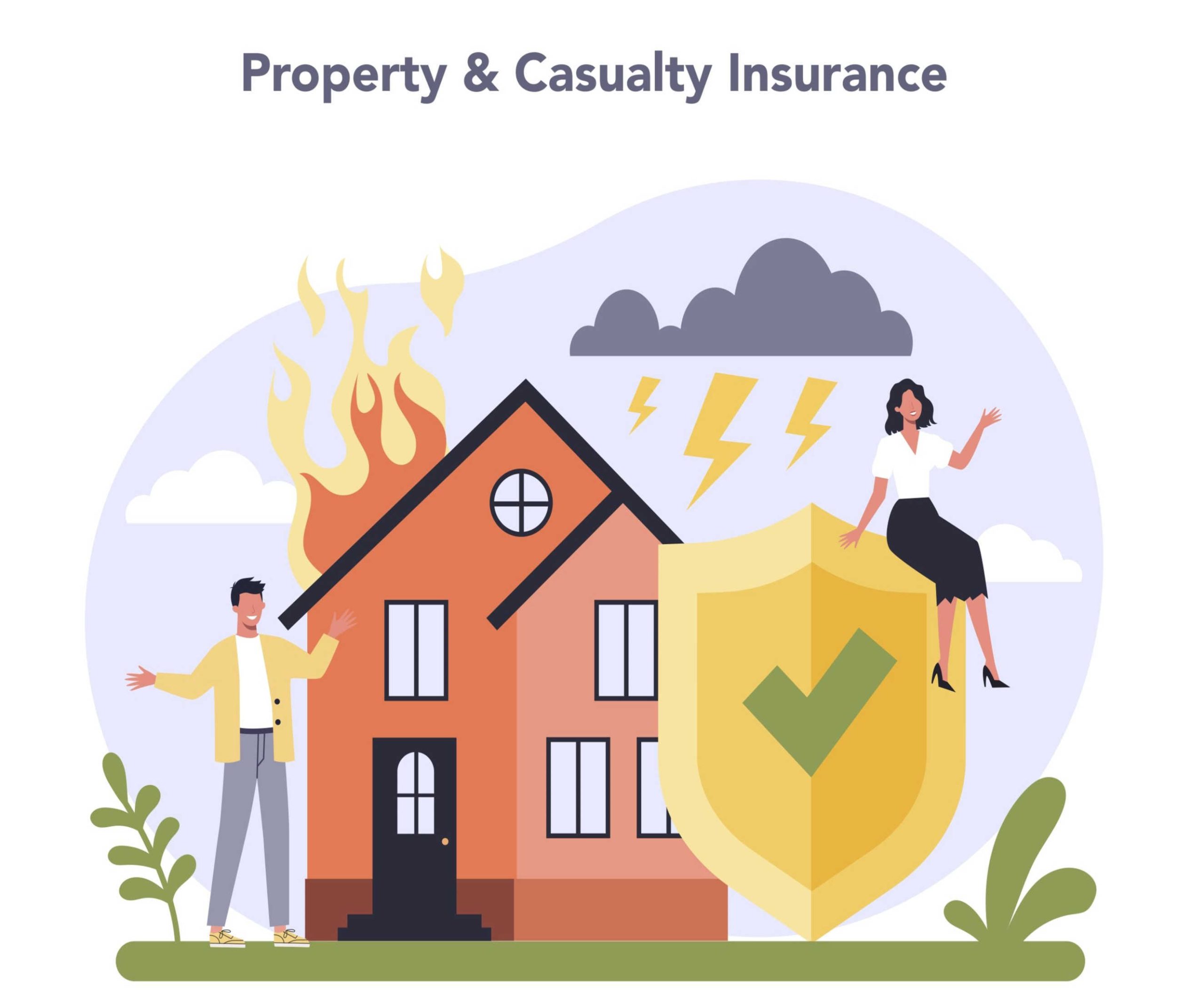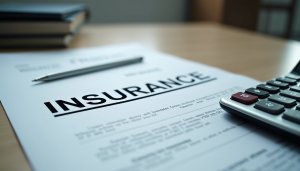Introduction
Greetings readers! My name is Steven and I work as an insurance analyst covering emerging trends within the property and casualty space. In this blog post, I wanted to share some of my insights on how different technologies are starting to disrupt and transform the insurance industry.
Property and casualty insurers have long relied on traditional methods like claims processing, underwriting, and risk assessment. However, advancements in areas like artificial intelligence, internet of things, autonomous vehicles, and more are presenting both opportunities and challenges for insurers. I’ll go through several of these emerging technologies in detail and discuss how they could impact various aspects of the insurance business model going forward.
Let’s start with an overview of the industry and then dive into each technology. I hope you find this informative on the cutting edge changes happening within P&C insurance!
The Traditional Insurance Model
To understand how technologies are disrupting the space, it helps to know the basics of how property and casualty insurance has traditionally operated. At a high level, insurers take in premiums from policyholders and pool those funds to pay out claims when risks become losses.
Two of the main functions for P&C insurers are underwriting and claims processing. Underwriting is the process of identifying and assessing risks to determine whether to offer coverage and at what price. Things like a client’s credit, driving history, home security systems, etc. are analyzed to gauge probable future losses.
Claims processing kicks in when insured risks happen – things like car accidents, home damage from storms, liability issues. Insurers then investigate claims and determine payout amounts based on policy terms and conditions. Both underwriting and claims have historically relied heavily on human interaction, paperwork and manual labor.
In addition, insurers use collected policy and claims data to refine their understanding of risks and pricing over time. Actuaries crunch the numbers to estimate future costs and ensure premium levels are sufficient. Risk engineering also examines how to minimize losses through recommendations like improved construction methods.
So in summary – premiums in, some payouts out, data continually analyzed to refine the business model. While effective, this process could be sped up and improved with modern technologies. Let’s now dive into a few key trends emerging in insurance tech.
Visit : Property and Casualty Insurance
Artificial Intelligence & Machine Learning
One technology increasingly transforming the industry is artificial intelligence, with machine learning as a major application. Machine learning involves training algorithms on massive amounts of historical insurance data to spot complex patterns and relationships that humans may miss.
Insurers are deploying AI/ML capabilities across the value chain. On the underwriting side, algorithms can more accurately evaluate individual risks by analyzing far more data points than human underwriters. This leads to more precise pricing that better reflects true probabilities of loss.
ML is also being applied to the claims process. By learning from patterns in past claims records, AI can help automatically detect fraud and streamline approvals. Complex injuries or damage can even be assessed via image recognition of photos/x-rays without human claims adjusters visiting in-person.
Another area gaining traction is predictive analytics through machine learning. By identifying attributes common to future claims, insurers hope to better target risk prevention messaging. The goal is helping policyholders avoid issues altogether through proactive solutions informed by AI insights, ultimately reducing future loss costs industry-wide.
While these may seem like lofty goals requiring huge troves of historic data, insurers have spent decades accumulating records that are now fueling exciting algorithm advances. Early adopters report increased profits by applying AI/ML capabilities to core insurance functions like risk evaluation, pricing optimization, claims processing automation, and more predictive services. The technology is a catalyst for modernization across the industry.
Internet of Things (IoT)
Closely tied to AI is how insurers are tapping into the vast potential of interconnected “things” through internet of things technology. IoT involves sensors, devices and appliances that link to online networks enabling remote monitoring and control. In an insurance context, these connected devices provide a wealth of real-time risk and safety data.
For home insurance specifically, IoT gadgets like smart thermostats, security cameras, water sensors, fire alarms and more yield insights into property conditions and occupant behaviors. Insurers offer premium discounts and additional protection for policyholders who opt-in to having activity and alerts from these networked home systems reported.
Early warning of risks like fires or floods allows faster claims response while proactively addressing issues can lower future costs. IoT also empowers preventive strategies by analyzing usage patterns to spot efficiency opportunities or unsafe situations illuminated by sensor observations over time.
In the commercial space, smart buildings integrated with IoT systems optimize operations through automated maintenance triggered by sensor feedback. Workplace safety can be monitored remotely and emergency plans improved based on IoT sensor data. Fleets of connected commercial vehicles gain telematics delivering insights into driver behavior tied to risk assessment and premium adjustments as well.
Overall, IoT expands the scope of data available to insurers, empowering more precise risk evaluations, proactive loss prevention programs, and quicker claims response thanks to the real-time visibility these internet-integrated devices provide into insured assets and activities. It’s a goldmine of insights enhancing core insurance functions when harnessed appropriately.
Visit : Property and Casualty Insurance
Autonomous Vehicles
Another area poised to deeply disrupt auto insurance is the rise of self-driving cars, which are increasingly becoming a reality on our roads. As autonomous vehicle technology progresses through various levels of driving assistance, it promises sweeping changes for insurers underwriting auto risks and handling related claims.
Early estimates suggest autonomous features and fully self-piloted vehicles could reduce up to 90% of crashes tied to human error over time as the technology matures and adoption grows. This means plummeting future auto claims costs industry-wide from fewer accidents. As a result, premiums may see commensurate decreases to remain competitive in a redefined risk landscape with self-driving assumed to become the norm.
However, the transition is complex, with technological and legal questions remaining. While self-driving modes could curb high-risk behaviors like distracted driving, product liability concerns may emerge regarding how autonomous systems perform in unseen scenarios. Regulations and standards will shape insurer responsibilities and coverage needs through this technological transition as well.
For now, insurers are testing forms of usage-based coverage dynamically tied to telematics capturing autonomous features engaged. The goal is incentivizing adoption while ensuring profits during a change period requiring agile responses. Overall, autonomous tech spells disruption but also opportunities for those proactively exploring coverage models suitable to emerging risks in a driverless future. Collaboration between auto insurers and automakers will likely intensify surrounding these changes.

Drones and Aerial Imagery
Drones have opened up new possibilities in property inspection and claims assessment, bringing efficiency gains while keeping costs contained. In the aftermath of storms or other insured disasters, aerial imagery captured by drones allows insurers to quickly survey damage across wide locations without sending staff to each site.
With high-resolution photos stitched into 3D imagery, underwriters gain a full perspective of property conditions otherwise not feasible through traditional on-site surveying alone. This expedites the claims process helping policyholders recover sooner. Drones also support preventive strategies through pre-loss inspections assessing issues like poor roof conditions or drainage problems at risk of imminent damage.
Similarly, construction project monitoring leverages drones to review site safety practices and validate completed work billed through policies. Fraud detection improves with aerial evidence compared to relying solely on paper documentation that may lack transparency. Agricultural insurers are another sector tapping drone technology to assess crop health or document hail damage extending over vast land areas more efficiently.
The cost-savings and productivity gains made possible through aerial imagery opens new business opportunities for insurers creatively applying drone data collection. It also provides another data source augmenting machine learning algorithms analyzing property and risk features on a massive scale. Drones ensure critical information reaches underwriting and claims teams in real-time to speed responses when seconds count.
3D Printing
An emerging technology with implications further out is 3D printing’s potential to reshape property replacement requirements and commercial liability exposures. As 3D printing becomes more accessible and scalable, insureds may increasingly turn to on-demand manufacturing for customized parts and structures rather than conventional building materials suppliers.
This represents an intriguing shift requiring coverage evaluations from insurers. For example, how would total loss claims be settled if policyholders can reproducing damaged property assets through 3D printing rather than traditional rebuilding? What liabilities may emerge from 3D printed goods compared to traditionally manufactured products?
Consumer policies may need adjusting to address 3D printed home additions or renovations. Similarly, commercial general liability policies require consideration as contracting businesses take on 3D printing services. Quality control, intellectual property issues, and even product recalls changing the risk landscape are all factors as additive manufacturing becomes mainstream.
While adoption remains in early stages, 3D printing is another technology signaling potential disruption as yet another capability is brought under the insurance umbrella. Proactive planning allows preparing coverage models to support fast growing manufacturing methods of the future. Maintaining flexibility to embrace innovations will distinguish industry leaders navigating technology changes ahead.




Comments
Can you write more about it? Your articles are always helpful to me. Thank you!
Sustain the excellent work and producing in the group!
I’m so in love with this. You did a great job!!